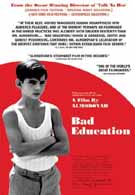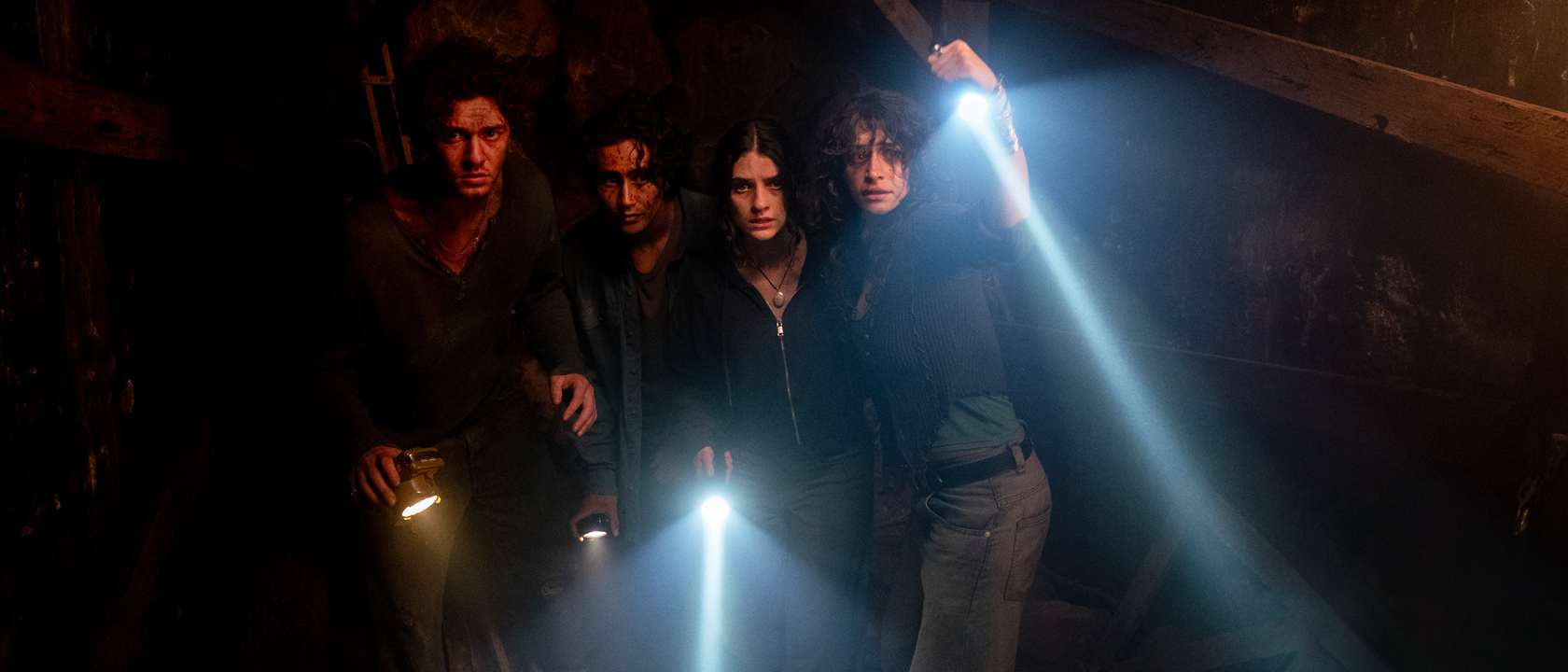‘Tis the season to be… Pedro Almodóvar. Imagine what it might be like, if you will, to be the internationally acclaimed Spanish filmmaker with a 2003 Oscar for best screenplay, a nomination for best director and a movie, Bad Education (La Mala educación), that has brought American cinema-goers flocking to the theaters this holiday season. And what if you cast Gael García Bernal (Motorcycle Diaries, Y Tu Mama Tambien) as your leading male and female? It’s good to be Almodóvar. However, if you’re expecting Bad Education to be as gripping as Almodóvar’s other films, it’s not. It is clear that Almodóvar deals with some harsh realities in this movie, some which might correlate with his own childhood experiences, however, unlike 2003’s Talk to Her, Bad Education lacks a certain artistic clarity. The film comes one-step too close to loosing its audience in a sea of drag queens, time warps and an incomprehensible depiction of fiction vs. reality.
The movie opens in 1980’s Madrid when Ignacio Rodriquez (Bernal) pays a visit to renowned director and childhood friend Enrique Goded (Fele Martínez) in hopes of landing a starring role in his next film. Ignacio ignites the past when he hands Enrique a copy of his semi-autobiographical screenplay entitled “The Visit”, a piece that pays homage to Ignacio’s damaged history with Catholic priest, Father Manolo, and his not-to-innocent relationship with first love Enrique. Quickly, we are taken back to scenes of Ignacio’s schoolboy childhood and his first “encounter” with Enrique at a local movie theater. The script, with its fictional ending, continues with a present-day Ignacio dressed as drag queen Zahara attempting to get “her” revenge on Father Manolo. Inspired by Ignacio’s words on the page, Enrique agrees to bring “The Visit” to the big screen, however as the duo rekindle, Enrique begins to doubt that his new muse is truly who he claims to be.
It’s not the subject matter of Bad Education that was troubling (Almodóvar’s theme of homosexuality is inherent in most of his films) or the acting (Barnal is wonderfully powerful as Zahara and convincing as Ignacio), but it is the focus of the film that is unclear. There are three different worlds that Almodóvar plays with: the past, the present, and the fictional world of Ignacio’s screenplay. The changing of time happens too quickly and some scenes are lost in a toss up between what’s real and what’s on-screen fiction. With an abundant amount of plots to follow and one too many characters for Bernal to play, Bad Education becomes just plain confusing. Instead of wanting to uncover some of the film’s inherent mysteries, I was left wondering what Almodóvar was trying to say. Is this a piece of film noir attacking the cruelties of the Catholic Church or a dedication to Almodóvar’s life and past?
Also disturbing is the lack of connection I felt with the characters. Unlike the endearing and heartfelt Talk to Her, Bad Education lacks an emotional core and its characters, while complex and well developed, are slightly dry. The only likeable character in Bad Education is Enrique who slowly becomes an improbable hero.
I do have to make note of one of the film's positive attributes. The juxtaposition of film noir with Almodóvar’s classic vivid color palette is visually outstanding. Each scene is coated with bright blues and reds, even down to Barnal’s drag costumes. It is reassuring to see that some of Almodóvar’s themes were continued here.
Bad Education unfolds some truly sinister twists and turns, but the film doesn’t offer what I had hoped for and expected from an original Almodóvar.











